Category
Popular Articles
- AI (12)
- Android (38)
- App Suggest (4)
- Apple (15)
- Apple TV (2)
- Bluetooth (3)
- Cars (2)
- ChatGpt (1)
- Chrome (2)
- Did you know? (1)
- E-Commerce News (1)
- Ecommerce Websites business (7)
- Electronics Shopping (5)
- Fashion Tips (3)
- Gaming (4)
- Google Gemini (3)
- Hair Care Tips (2)
- How to (13)
- iCloud (1)
- Infotainment System (1)
- Iphone (101)
- Job Posting (1)
- Lifestyle (3)
- Mac (20)
- Mobile Games (1)
- Netflix (1)
- Online Shopping Websites (2)
- Personal Finance Management (3)
- Product Reviews (3)
- Roku TV (4)
- Samsung (9)
- Shopping Tips (10)
- Spotify (1)
- Tech (92)
- Windows 11 (18)
- Zero Waste (3)
Discounted Products
-
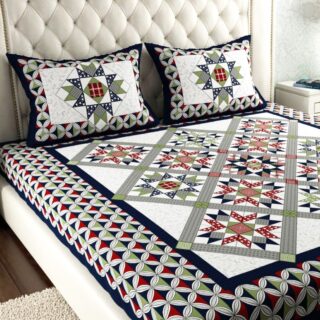 Leo Creation 144 TC Cotton Double Jaipuri Prints Flat Bedsheet(Pack of 1, Blue, Gree, Red, Grey, Light Grey)
Leo Creation 144 TC Cotton Double Jaipuri Prints Flat Bedsheet(Pack of 1, Blue, Gree, Red, Grey, Light Grey)
₹2,999.00Original price was: ₹2,999.00.₹329.00Current price is: ₹329.00. -
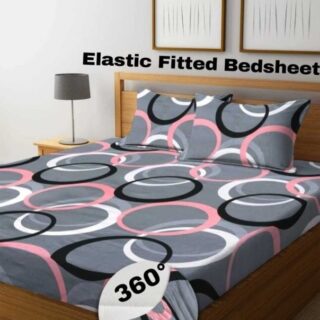 Home Garage 210 TC Cotton King Floral Fitted (Elastic) Bedsheet(Pack of 1, Grey)
Home Garage 210 TC Cotton King Floral Fitted (Elastic) Bedsheet(Pack of 1, Grey)
₹999.00Original price was: ₹999.00.₹299.00Current price is: ₹299.00. -
 Goodrik 140 TC Cotton Double 3D Printed Flat Bedsheet(Pack of 1, Brown)
Goodrik 140 TC Cotton Double 3D Printed Flat Bedsheet(Pack of 1, Brown)
₹499.00Original price was: ₹499.00.₹229.00Current price is: ₹229.00. -
 GLOBALSHOP 350 TC Microfiber Double Floral Flat Bedsheet(Pack of 1, Multicolor)
GLOBALSHOP 350 TC Microfiber Double Floral Flat Bedsheet(Pack of 1, Multicolor)
₹1,250.00Original price was: ₹1,250.00.₹263.00Current price is: ₹263.00. -
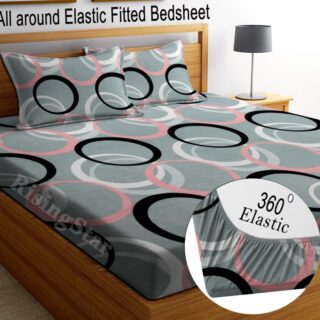 RisingStar 250 TC Microfiber King Printed Fitted (Elastic) Bedsheet(Pack of 1, FITTED-ROUND-CIRCLES-PREMIUM)
RisingStar 250 TC Microfiber King Printed Fitted (Elastic) Bedsheet(Pack of 1, FITTED-ROUND-CIRCLES-PREMIUM)
₹2,299.00Original price was: ₹2,299.00.₹299.00Current price is: ₹299.00. -
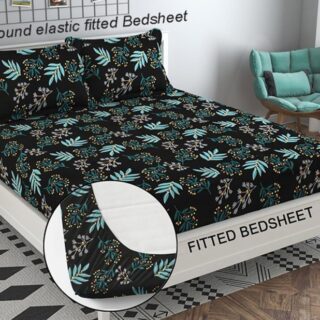 Home Garage 210 TC Cotton King Floral Fitted (Elastic) Bedsheet(Pack of 1, Fitted Black Green)
Home Garage 210 TC Cotton King Floral Fitted (Elastic) Bedsheet(Pack of 1, Fitted Black Green)
₹1,299.00Original price was: ₹1,299.00.₹299.00Current price is: ₹299.00. -
 Home Garage 180 TC Cotton King 3D Printed Flat Bedsheet(Pack of 1, White)
Home Garage 180 TC Cotton King 3D Printed Flat Bedsheet(Pack of 1, White)
₹999.00Original price was: ₹999.00.₹229.00Current price is: ₹229.00. -
 Home Sizzler 153 cm (5 ft) Polyester Room Darkening Window Curtain (Pack Of 2)(Floral, Maroon)
Home Sizzler 153 cm (5 ft) Polyester Room Darkening Window Curtain (Pack Of 2)(Floral, Maroon)
₹799.00Original price was: ₹799.00.₹299.00Current price is: ₹299.00. -
 Panipat Textile Hub 152.4 cm (5 ft) Polyester Window Curtain (Pack Of 2)(Solid, Aqua)
Panipat Textile Hub 152.4 cm (5 ft) Polyester Window Curtain (Pack Of 2)(Solid, Aqua)
₹1,899.00Original price was: ₹1,899.00.₹299.00Current price is: ₹299.00. -
 Home Sizzler 214 cm (7 ft) Polyester Semi Transparent Door Curtain (Pack Of 2)(Floral, Maroon)
Home Sizzler 214 cm (7 ft) Polyester Semi Transparent Door Curtain (Pack Of 2)(Floral, Maroon)
₹1,199.00Original price was: ₹1,199.00.₹399.00Current price is: ₹399.00. -
 Home Sizzler 153 cm (5 ft) Polyester Room Darkening Window Curtain (Pack Of 2)(Floral, Brown)
Home Sizzler 153 cm (5 ft) Polyester Room Darkening Window Curtain (Pack Of 2)(Floral, Brown)
₹799.00Original price was: ₹799.00.₹299.00Current price is: ₹299.00. -
 Stella Creations 214 cm (7 ft) Polyester Room Darkening Door Curtain (Pack Of 2)(Abstract, Brown)
Stella Creations 214 cm (7 ft) Polyester Room Darkening Door Curtain (Pack Of 2)(Abstract, Brown)
₹1,299.00Original price was: ₹1,299.00.₹449.00Current price is: ₹449.00. -
 Homefab India 152.5 cm (5 ft) Polyester Room Darkening Window Curtain (Pack Of 2)(Floral, Light Blue)
Homefab India 152.5 cm (5 ft) Polyester Room Darkening Window Curtain (Pack Of 2)(Floral, Light Blue)
₹1,199.00Original price was: ₹1,199.00.₹319.00Current price is: ₹319.00. -
 Urban Home 214 cm (7 ft) PVC Transparent Door Curtain Single Curtain(Solid, Off White)
Urban Home 214 cm (7 ft) PVC Transparent Door Curtain Single Curtain(Solid, Off White)
₹699.00Original price was: ₹699.00.₹203.00Current price is: ₹203.00. -
 Panipat Textile Hub 213 cm (7 ft) Polyester Door Curtain (Pack Of 2)(Solid, Brown)
Panipat Textile Hub 213 cm (7 ft) Polyester Door Curtain (Pack Of 2)(Solid, Brown)
₹1,199.00Original price was: ₹1,199.00.₹349.00Current price is: ₹349.00.
Affiliate Links
Promotion

Hey friends! I’m Jessica, and if you know me, you already know I love testing gadgets—from phones to laptops and, of course, tablets. Recently, I’ve been spending a lot of time with a few Android tablets, and I wanted to share my honest experience about whether they’re really good, especially in 2025.
I’ve used Samsung Galaxy Tabs, Lenovo tablets, and even some budget models like Fire HD. Each of them has its strengths and quirks, so today I’ll walk you through everything you need to know before buying an Android tablet.
🌟 The Evolution of Android Tablets
A few years ago, Android tablets weren’t exactly the most exciting devices. They were often criticized for laggy performance, poor app optimization, and mediocre build quality. But things have changed—a lot.
Brands like Samsung, Lenovo, OnePlus, and Xiaomi have really stepped up their game. The Samsung Galaxy Tab S9 series, for instance, offers stunning AMOLED displays, smooth S Pen performance, and near-laptop capabilities. These devices prove Android tablets have matured into serious productivity and entertainment tools.
💻 Performance and Speed
Modern Android tablets come with high-end processors like Qualcomm Snapdragon 8 Gen 2 or MediaTek Dimensity chips. They can handle multitasking, streaming, gaming, and note-taking effortlessly.
Even budget-friendly models like the Lenovo Tab M11 or Amazon Fire Max 11 perform surprisingly well for casual users—perfect for watching Netflix, checking emails, or online classes.
Of course, not every tablet will match the raw speed of an iPad Pro’s M4 chip, but Android tablets still hold up great for most people’s daily use.
My tip: If you plan on editing videos, gaming, or using it for work, go for a flagship model like the Galaxy Tab S9+. But if you just want an affordable device for media or study, a mid-range one will do just fine.
🎨 Display Quality and Design
This is one area where Android tablets truly shine. Many models now feature AMOLED or LCD panels with 120Hz refresh rates. The result? Vibrant colors, deep contrast, and smooth visuals—great for streaming movies, reading, or drawing.
Samsung’s AMOLED screens are simply gorgeous, and I personally love watching Netflix or Disney+ on them because of the deep blacks and crisp details.
Design-wise, Android tablets have become thinner, lighter, and more premium. Aluminum builds, symmetrical bezels, and magnetic keyboard attachments make them look and feel modern.
✍️ Productivity and Multitasking
This is where the gap between Android tablets and iPads used to be huge—but not anymore!
Features like Samsung DeX mode turn your tablet into a mini desktop. You can open multiple apps in split screen, drag and drop files, and connect to an external monitor. Pair it with a keyboard and mouse, and you’ll feel like you’re using a laptop.
Apps like Microsoft Office, Google Docs, Notion, Canva, and Adobe Lightroom are now well-optimized for Android tablets. And with the addition of stylus support (like the S Pen), Android tablets have become great tools for artists, designers, and students who love to take notes digitally.
🎮 Gaming and Entertainment
If you love mobile gaming, Android tablets won’t disappoint. With powerful GPUs and large displays, they handle games like Genshin Impact, PUBG Mobile, and Asphalt 9 effortlessly.
You can even pair a controller via Bluetooth for a console-like experience. Plus, the integration with Google Play Store means access to thousands of apps and games.
For entertainment lovers, the combination of big screens and Dolby Atmos speakers makes watching movies or binge-watching TV shows an absolute joy.
🔋 Battery Life and Charging
Android tablets typically offer 10–14 hours of battery life, depending on usage. I found that even after a full day of work—emails, note-taking, streaming—the tablet still had some charge left.
Fast charging is another area where Android wins. Most flagship tablets come with 45W or higher fast charging, while even mid-range models support decent speeds. No more waiting forever for your tablet to charge!
📱 Software and Updates
This used to be a weak spot for Android, but manufacturers are improving. Samsung now offers up to 4–5 years of updates on its Galaxy Tabs, which is fantastic.
Android 14 (and beyond) brings features like improved multitasking, better stylus support, and app scaling for larger screens. Still, not every app is as perfectly optimized for tablets as on iPadOS—but it’s getting closer every year.
Tip from me: If you want the best software experience, stick with brands known for strong update policies like Samsung or Google Pixel Tablet.
🧭 Connectivity and Accessories
Most modern Android tablets come with USB-C ports, support for external storage, and even 5G connectivity on some models. That makes transferring files or using it for travel super easy.
Accessories like styluses, detachable keyboards, and protective covers make them even more versatile. And unlike iPads, some Android tablets support external hard drives and expandable storage via microSD cards—a huge plus for photographers and students.
💲 Price and Value
This is where Android tablets often win over iPads. You can find a decent Android tablet for under $200, a mid-range one for $300–$600, and premium models like the Galaxy Tab S9 Ultra for around $1,000.
Compare that to iPads, which start higher and charge extra for accessories like the Apple Pencil or Magic Keyboard.
So, if you’re looking for versatility without spending too much, Android tablets are a great deal.
❌ Drawbacks to Consider
Even though I love using Android tablets, there are still a few things to keep in mind:
- Some apps (like Instagram or certain games) aren’t fully optimized for tablet displays.
- Updates can be slower on cheaper models.
- The stylus experience, while great, still isn’t as fluid as Apple Pencil on iPad Pro.
However, these are minor issues that won’t affect casual users much.
✅ Final Verdict – Are Android Tablets Good?
Absolutely, yes! Android tablets in 2025 are better than ever. Whether you need one for school, work, art, or entertainment, there’s an option for every budget and purpose.
If you want premium quality and productivity, go for the Samsung Galaxy Tab S9 or Pixel Tablet.
If you’re on a budget, the Lenovo Tab M10 or Amazon Fire Max 11 will handle most tasks easily.
I personally use my Android tablet daily—for journaling, streaming, sketching, and even replying to emails while traveling. It’s lightweight, affordable, and super fun to use.
In short:
✅ Excellent for multitasking and entertainment
✅ Wide price range and value options
✅ Great battery and fast charging
✅ Improving software support
⚠️ Some app optimization issues remain
Final Words from Jessica:
If you’re wondering whether Android tablets are good—they absolutely are! I’ve been impressed by how far they’ve come. Whether you’re switching from an iPad or buying your first tablet, you’ll find something perfect in the Android lineup.
So go ahead—explore, compare, and choose what suits your lifestyle best.
Written by Bazaronweb
Latest Tech Articles
- 5 Ways to Backup and Restore Registry Settings in Windows
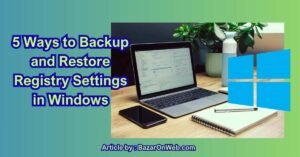
- iMessage Not Syncing Between iPhone & Mac? 8 Proven Ways to Fix Account & Device Issues

- Outlook Not Receiving Emails? 8 Proven Fixes for Windows, Mac & Mobile

- Zoom Not Connecting? 7 Ways to Fix Meeting Join Errors on Windows & Mac

- Microsoft Teams Not Opening? 5 Proven Fixes to Restart Your Workspace

Products
-
![Apple Watch Ultra 3 [GPS + Cellular 49mm] Running & Multisport Smartwatch w/Rugged Titanium Case w/Black Titanium Milanese Loop - M. Satellite Communications, Advanced Health & Fitness Tracking](https://bazaronweb.com/retailstores/wp-content/uploads/2025/09/apple-watch-320x320.jpg) Apple Watch Ultra 3 [GPS + Cellular 49mm] Running & Multisport Smartwatch w/Rugged Titanium Case w/Black Titanium Milanese Loop - M. Satellite Communications, Advanced Health & Fitness Tracking
Apple Watch Ultra 3 [GPS + Cellular 49mm] Running & Multisport Smartwatch w/Rugged Titanium Case w/Black Titanium Milanese Loop - M. Satellite Communications, Advanced Health & Fitness Tracking
-
 Apple iPad mini (A17 Pro): Apple Intelligence, 8.3-inch Liquid Retina Display, 256GB, Wi-Fi 6E, 12MP Front/12MP Back Camera, Touch ID, All-Day Battery Life — Purple
Apple iPad mini (A17 Pro): Apple Intelligence, 8.3-inch Liquid Retina Display, 256GB, Wi-Fi 6E, 12MP Front/12MP Back Camera, Touch ID, All-Day Battery Life — Purple
-
 Apple AirPods Max Wireless Over-Ear Headphones, Active Noise Cancelling, Transparency Mode, Personalized Spatial Audio, Dolby Atmos, Bluetooth Headphones for iPhone – Space Gray
Apple AirPods Max Wireless Over-Ear Headphones, Active Noise Cancelling, Transparency Mode, Personalized Spatial Audio, Dolby Atmos, Bluetooth Headphones for iPhone – Space Gray
-
 Apple AirPods Pro 2 Wireless Earbuds, Active Noise Cancellation, Hearing Aid Feature, Bluetooth Headphones, Transparency, Personalized Spatial Audio, High-Fidelity Sound, H2 Chip, USB-C Charging
Apple AirPods Pro 2 Wireless Earbuds, Active Noise Cancellation, Hearing Aid Feature, Bluetooth Headphones, Transparency, Personalized Spatial Audio, High-Fidelity Sound, H2 Chip, USB-C Charging
-
 Leo Creation 144 TC Cotton Double Jaipuri Prints Flat Bedsheet(Pack of 1, Blue, Gree, Red, Grey, Light Grey)
Leo Creation 144 TC Cotton Double Jaipuri Prints Flat Bedsheet(Pack of 1, Blue, Gree, Red, Grey, Light Grey)
₹2,999.00Original price was: ₹2,999.00.₹329.00Current price is: ₹329.00.


Leave a Reply